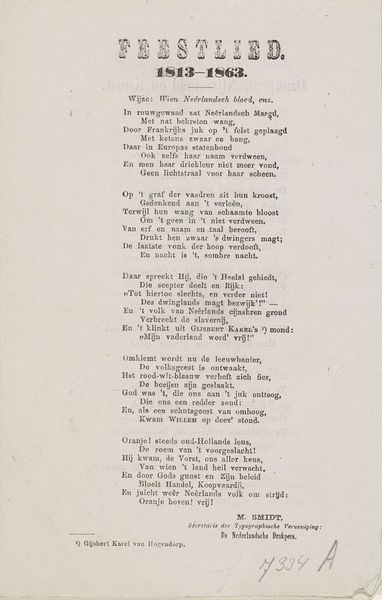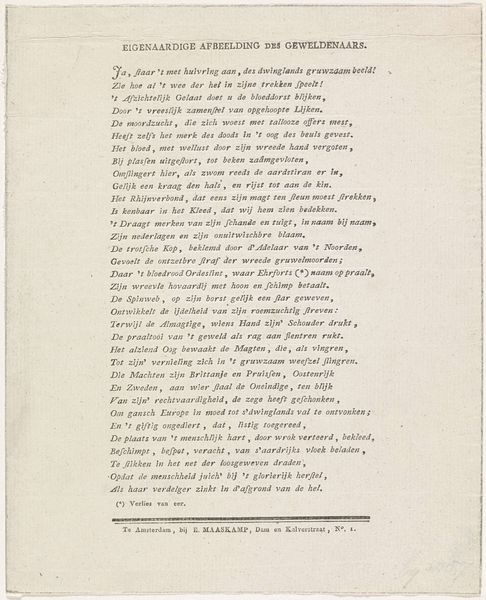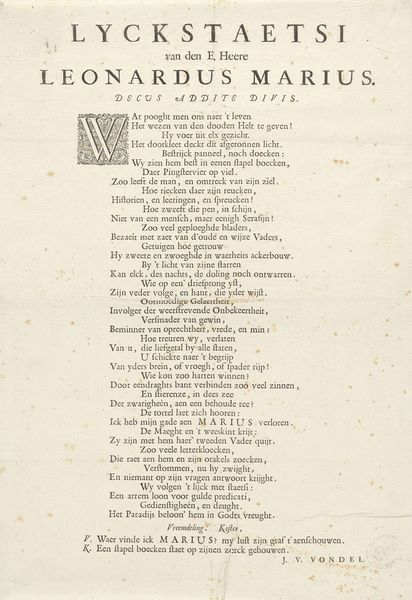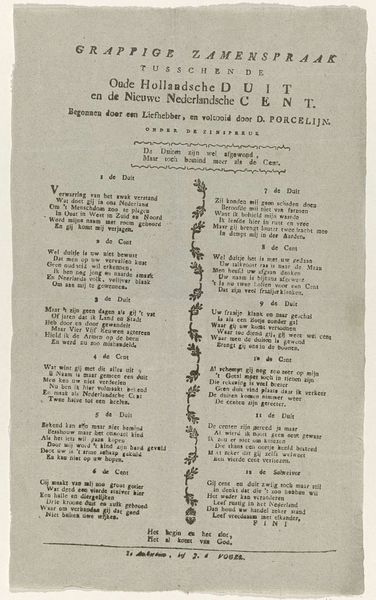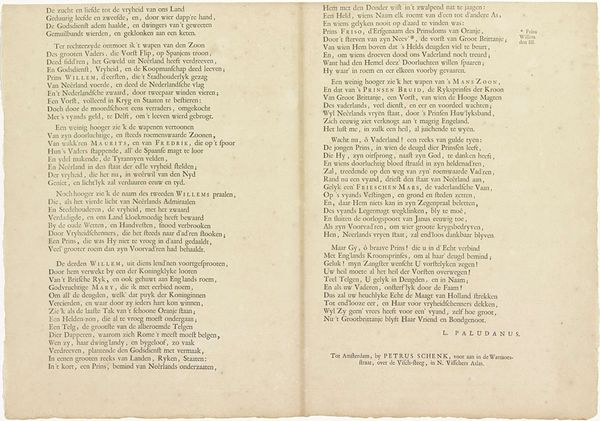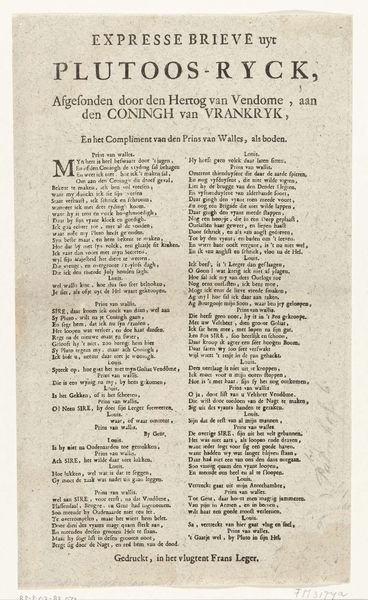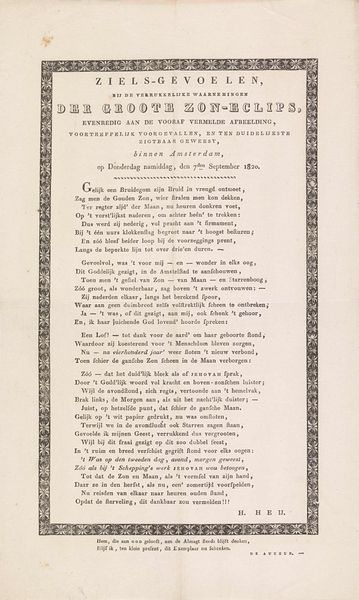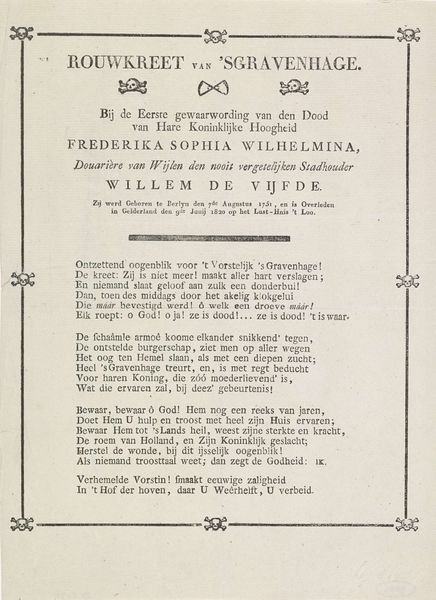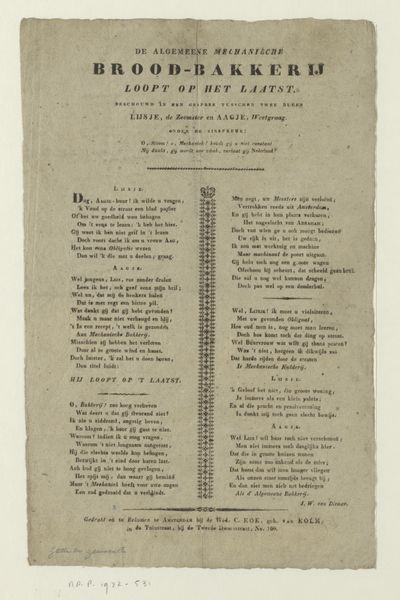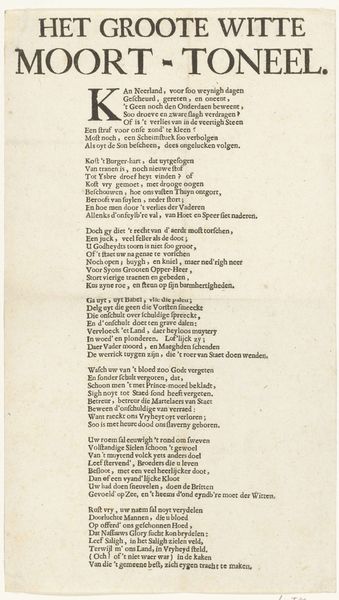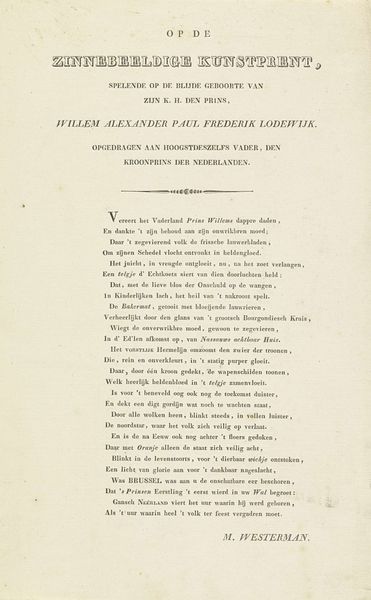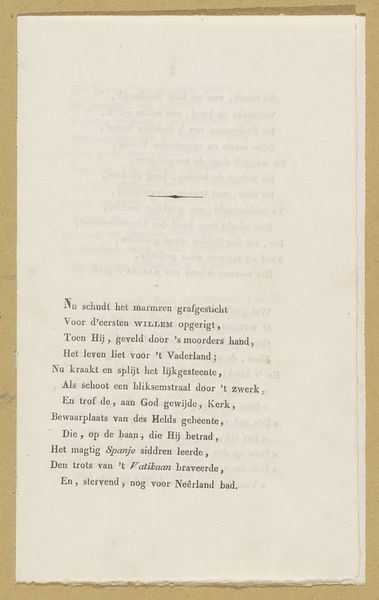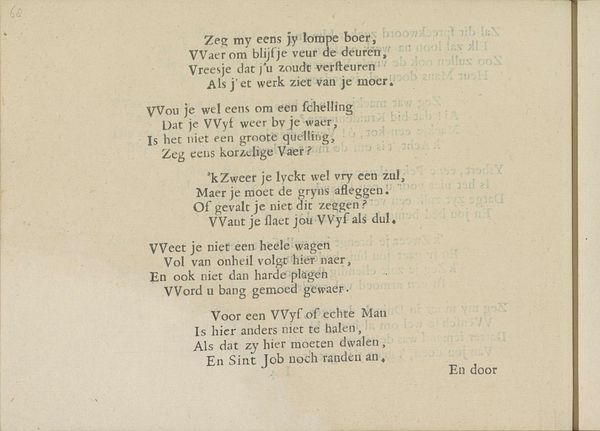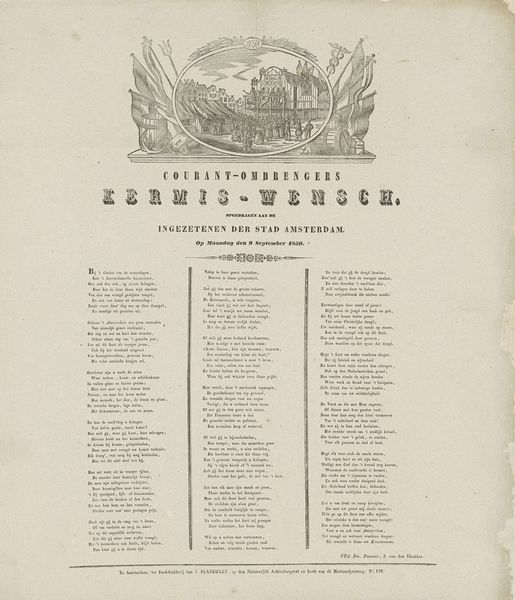
Vers op het afbreken van de Haringpakkerstoren te Amsterdam, 1829 1829
0:00
0:00
gebroederskoster
Rijksmuseum
graphic-art, print, typography
#
graphic-art
#
dutch-golden-age
# print
#
typography
Dimensions: height 317 mm, width 200 mm
Copyright: Rijks Museum: Open Domain
Editor: Here's an intriguing piece: "Vers op het afbreken van de Haringpakkerstoren te Amsterdam, 1829," created by the Gebroeders Koster. It’s a typographic print about the demolition of the Haringpakkerstoren. There's a strong sense of lament, a feeling of loss within the words. What story does this print tell beyond the literal destruction of a building? Curator: Precisely. While ostensibly about the demolition of the Haringpakkerstoren, it's more deeply entrenched in the politics of imagery and public memory. Notice the date, 1829. It's well after the Dutch Golden Age, a period of immense national pride tied to maritime power. This tower, as depicted in the verses, seems to be personified, mourning its own demise, lamenting Amsterdam's perceived decline. It's a political commentary disguised as a lament, wouldn’t you say? Editor: A political commentary... interesting. So the destruction of the tower symbolized something more, a changing Amsterdam, maybe even a waning of Dutch power? Was this tower particularly important? Curator: Consider that the print is deliberately invoking nostalgia for a perceived "golden age." The poem itself is a direct appeal to Amsterdammers, questioning their values. The tower witnessed so much history; consider how it facilitated trade in salted herrings, the foundation of Amsterdam’s prosperity. Editor: I see what you mean. It uses sentimentality to make a point about progress and change. Are there many prints like this, that blend historical record with political sentiment? Curator: Yes, these kinds of broadsides were fairly common; functioning much like a political cartoon today. They offered commentary accessible to a wide public, blending current events with cultural and historical narratives. What have you learned here? Editor: I hadn't considered the print's role in shaping public opinion and using the past to comment on the present. It’s more than just a historical document; it’s an argument. Curator: Exactly. It highlights the vital role that public art plays, sparking civic discourse and shaping our collective memory of it.
Comments
No comments
Be the first to comment and join the conversation on the ultimate creative platform.
